How can you make your kitchen more sociable? 10 tips from interior designers
Add warmth, cozy features, and a relaxing atmosphere to your kitchen with these expert tips

- 1. Consider your kitchen layout
- 2. Create a seating area
- 3. Hide your appliances
- 4. Introduce freestanding furniture
- 5. Opt for open shelving and glass-fronted cabinets
- 6. Add luxury features that make life easier
- 7. Create a layered lighting scheme
- 8. Think about hardware
- 9. Decorate with personal pieces
- 10. Soften the space through textures and textiles

For many people, the kitchen is the hub of the home. It's the room we gather, dine, and host friends and family, so the design and flow of the space should reflect that, which is why people are looking for ways to create a more sociable kitchen.
While your kitchen ideas will always have a functional element, they should be cozy, lived-in spaces that reflect your lifestyle. Whether it's a comfortable seating area, a dedicated drinks bar, or even a space for group cooking, there are so many ways to make your kitchen work harder for your social needs.
But what is the best approach that balances all the needs of your kitchen? We've turned to designers to discover their favorite ways to make a kitchen more sociable without compromising on style or function. And their ideas really are food for thought.
What's the appeal of a sociable kitchen?
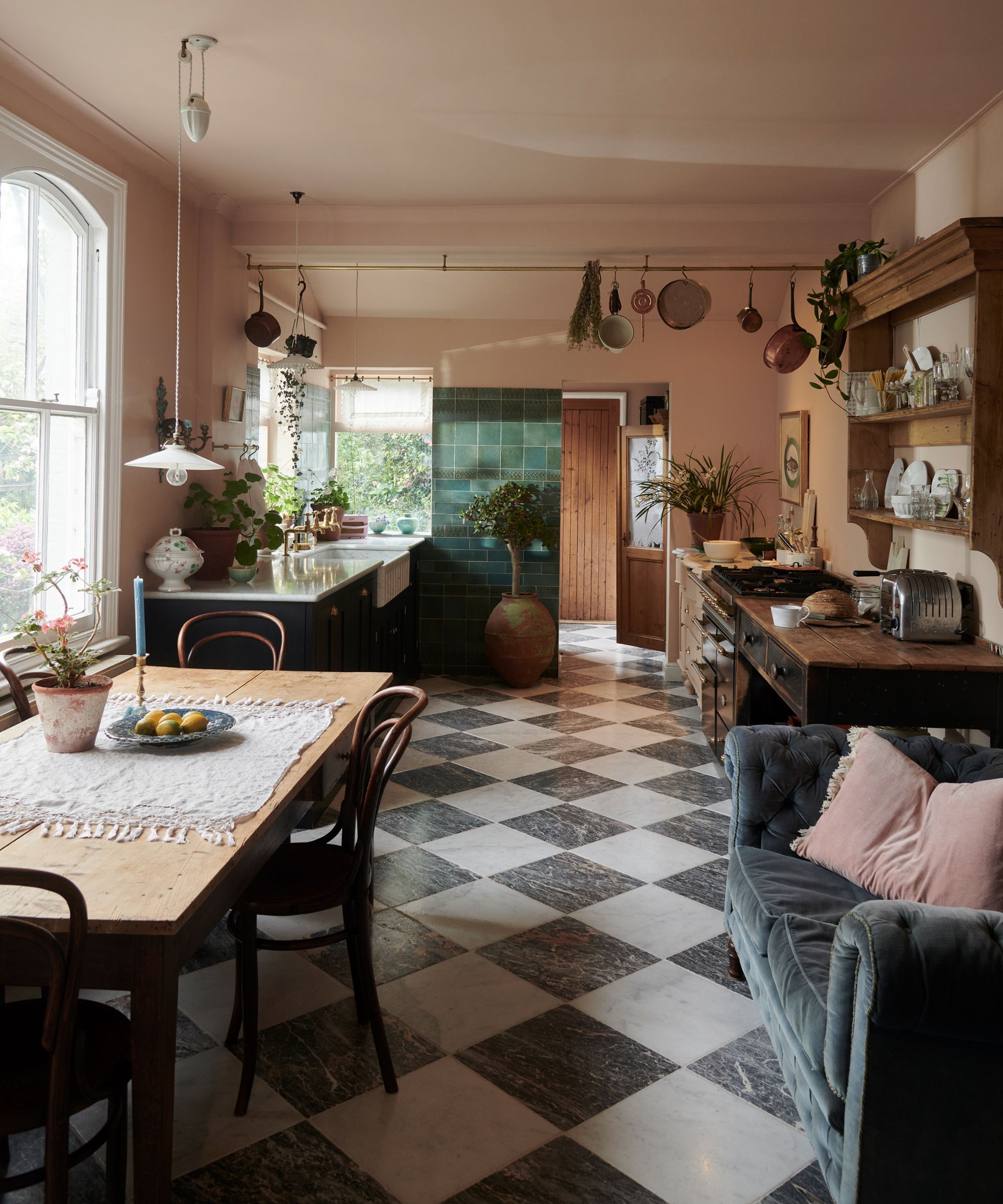
Kitchen design has been evolving for quite some time now, no longer seen as just a utilitarian cooking space. But they are transcending into a more sociable realm, as the room dedicated to hosting and spending quality time.
'The rise of sociable kitchens is part of a broader shift in how we live and connect at home. While open-plan living has long been a popular way to maximize space, the kitchen has taken on a more central role in recent years – not just as a place to cook, but as the heart of everyday life,' explains Fred Horlock, design director at Neptune.
'From the growing focus on wellness and home cooking to the desire for more meaningful connections with family and friends, the kitchen is now designed as a place to gather, share, and spend time together. It’s no longer just functional – it’s emotional,' he adds.
In many ways, the kitchen has taken on the role the living room used to hold. 'The kitchen has become the natural gathering place in the home, not just for cooking, but for everything from family conversations to casual entertaining. People want a space that’s functional, but also somewhere they actually want to spend time,' adds Richard Davonport, managing director at Davonport.
Design expertise in your inbox – from inspiring decorating ideas and beautiful celebrity homes to practical gardening advice and shopping round-ups.
10 ways to make your kitchen more sociable
From layout to decor, there are so many design elements and accessories that can take your kitchen from utilitarian to something more sociable and inviting. Here are 10 ways to instantly give your kitchen a more sociable feel, according to designers.
1. Consider your kitchen layout
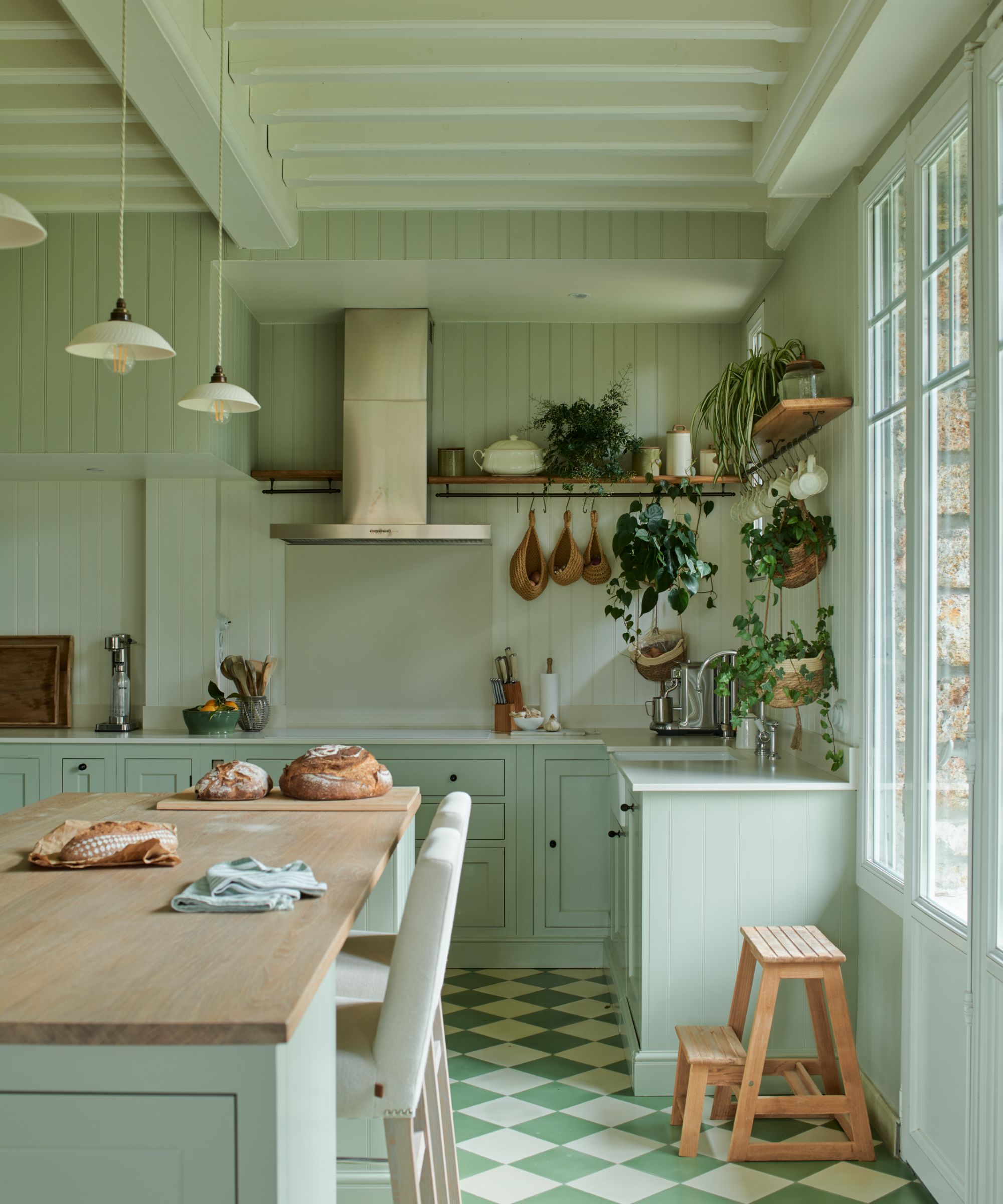
It's key to think about how you're going to create a more social atmosphere in your kitchen. Zones are still important, so think about the main area of your space that will be the gathering point. Your kitchen layout is key to this.
'To create a more sociable kitchen, start by thinking about layout. You want good flow between cooking, dining, and seating areas so that people can be together without getting in each other’s way,' says Richard.
'An island or a peninsula is a good anchor point as it creates a natural break between working zones and more relaxed areas, and it encourages people to gather,' he adds. If your kitchen doesn't feature a built-in island, there are freestanding accessories, like work tables, that can be introduced, even in small kitchens.
2. Create a seating area
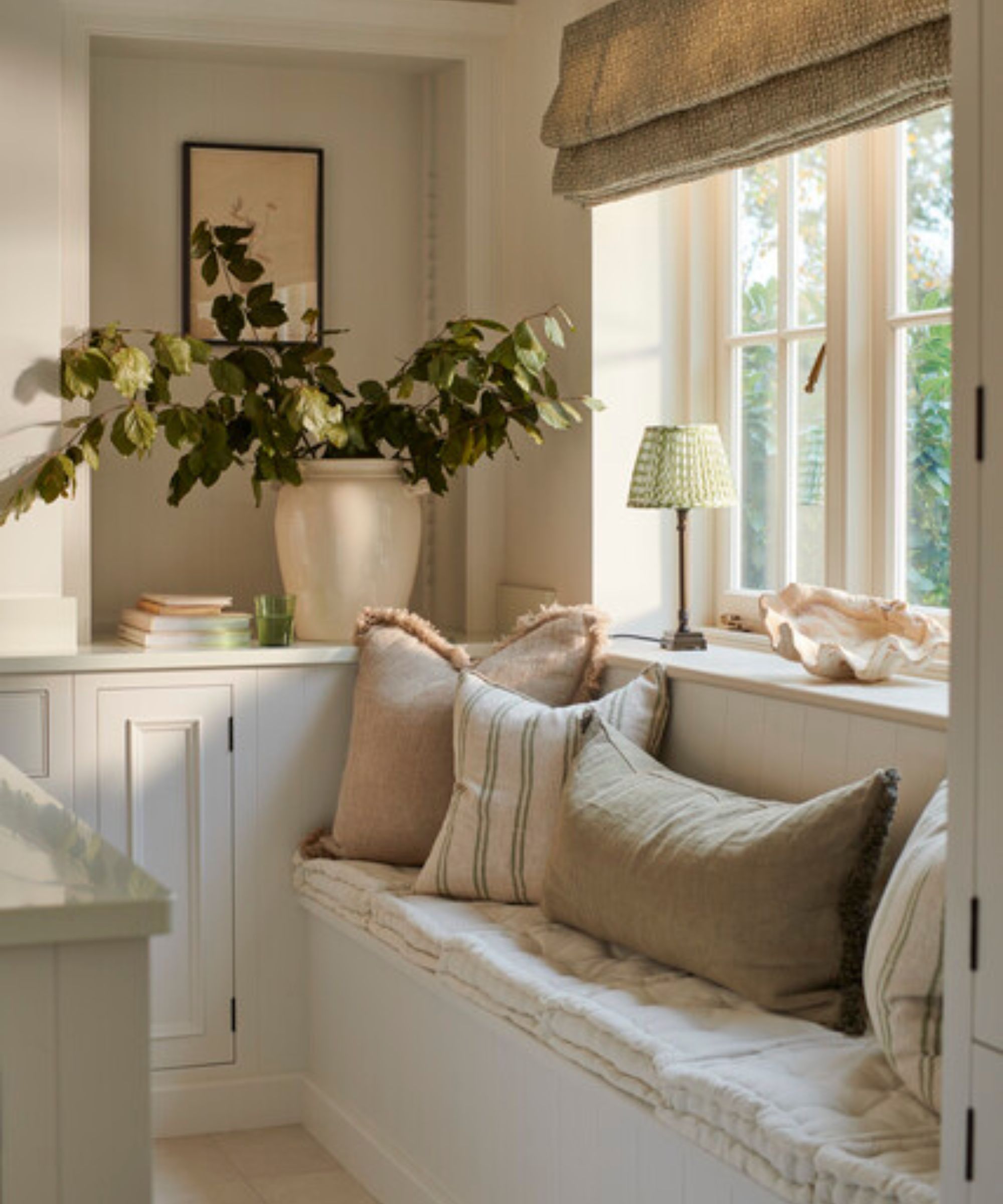
No sociable kitchen is complete without some sort of seating area. If you want people to gather and spend time in the kitchen, it needs to be comfortable, welcoming, and have clear spaces that invite someone to stick around.
'Kitchen island seating invites people to gather, chat, or lend a hand while cooking, bringing a sense of theater and shared experience to food preparation,' explains Fred.
Where possible, it's also useful to have a more relaxed space to sit, relax, and gather. 'The big trend in this area at the moment is built-in banquette seating as it allows for a more relaxed gathering space,' says Richard. This is, of course, space dependent, but a banquette or even a small bistro set can make a difference.
'Introducing relaxed seating – such as a built-in bench or window seat – encourages people to linger in the space, even when cooking isn’t the main activity. It’s a simple way to create a cozy corner for reading, chatting, or enjoying a morning coffee, and it reinforces the idea of the kitchen as a room to live in, not just cook in,' says Fred.
3. Hide your appliances

'To make a kitchen truly sociable, it’s important to design it as an extension of the home, not just a room filled with appliances and cabinets. A sociable kitchen should feel welcoming and comfortable, not clinical,' says Fred.
It's a good idea to step back and look at what makes your kitchen feel more utilitarian. Hidden appliances will instantly elevate the look of your scheme and make it feel more homey, and think about ways to hide your small countertop appliances, too.
'Countertop cupboards or larders that hide appliances like toasters or coffee machines keep the space clean and calm while still being practical,' adds Fred. Appliance garages are a popular choice in spaces big and small. It's a small detail that makes a big difference for a sociable kitchen.
4. Introduce freestanding furniture
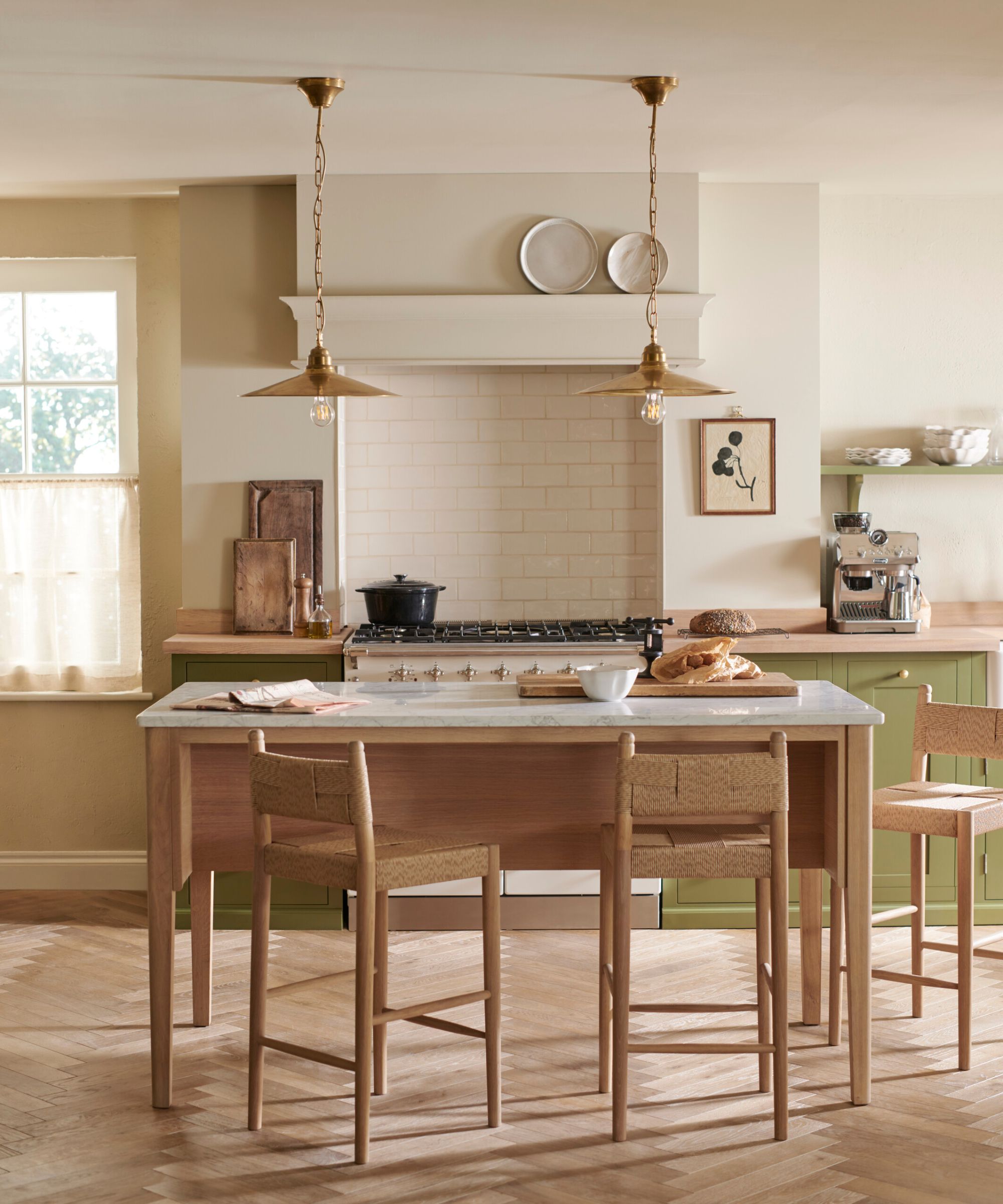
The desire for more lived-in spaces has meant that freestanding kitchens are proving more popular than ever. And it turns out, it's a great way to make your kitchen more sociable. It doesn't need to be a fully unfitted kitchen – mix freestanding furniture into your kitchen for a more casual, liveable feel.
'Incorporating freestanding pieces – such as a dresser, sideboard, or a dining table – adds warmth and a more lived-in feel, helping the kitchen flow effortlessly into adjoining spaces,' explains Fred.
In this kitchen, a more sociable atmosphere has been introduced with the freestanding island that doubles as a dining table. It's still functional, but it creates a much more inviting atmosphere that encourages people to sit and relax in the space.
5. Opt for open shelving and glass-fronted cabinets
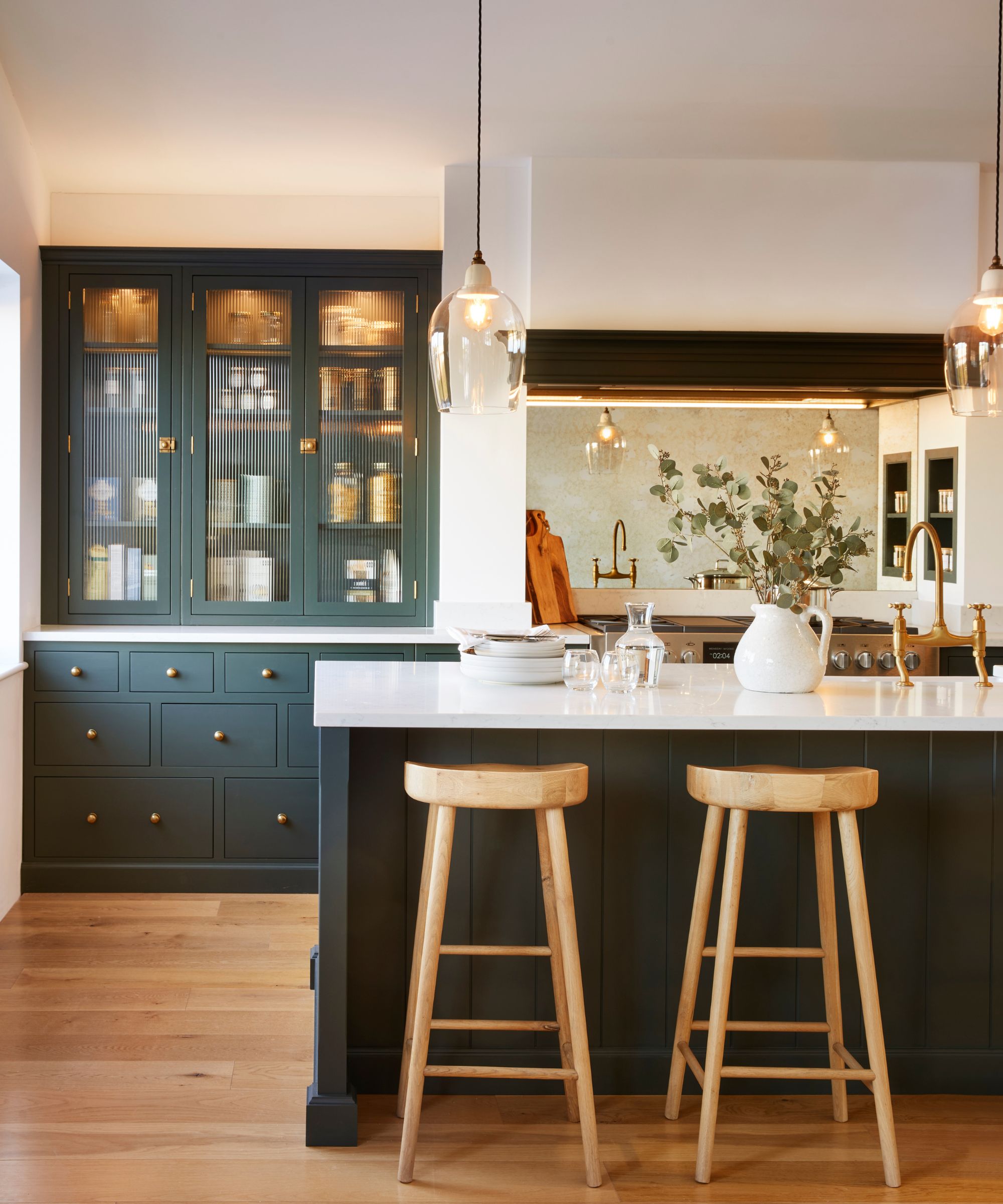
A sociable kitchen should feel lived-in and the furthest thing from a purely functional space. An effective way to blur the lines between the two is to break up solid runs of cabinetry with different materials, finishes, and styles.
'Replacing some wall cabinets with kitchen shelves helps create a more relaxed, informal feel and offers a chance to display characterful pieces,' explains Fred. This is a great way to bring in a more personalized finish, too.
However, if you need the storage space that cabinets provide, introduce glass-fronted cabinets, organic materials, and even new colors to bring in warmth and contrast to the space.
'Open shelving or glazed cabinets can help soften the transition between kitchen and living areas, especially in open-plan spaces,' adds Richard. 'Materials and finishes also make a difference, bringing in timber, natural stone, or softer paint tones can help the kitchen feel less clinical and more like part of the home.'
6. Add luxury features that make life easier

A more sociable kitchen should cater to your needs outside of cooking. For example, if your kitchen is at the center of hosting and gathering, introducing features and appliances that make the task quicker is a must.
'A hot water tap is especially useful in a sociable setting, it makes everything from cups of tea to cooking prep quicker, and it frees up cooktop space and countertop clutter. It’s one of those small additions that noticeably improve how the space functions day to day,' says Michael Sammon, design director at Wodar.
The features you introduce will depend on your lifestyle and the way you use your kitchen. 'A second sink or a drinks zone can also help, particularly if you entertain often, as it lets people get involved without crowding the main cooking area. A drinks zone can be anything from wine storage to a dedicated bar or alchemist's cupboard,' adds Richard.
7. Create a layered lighting scheme
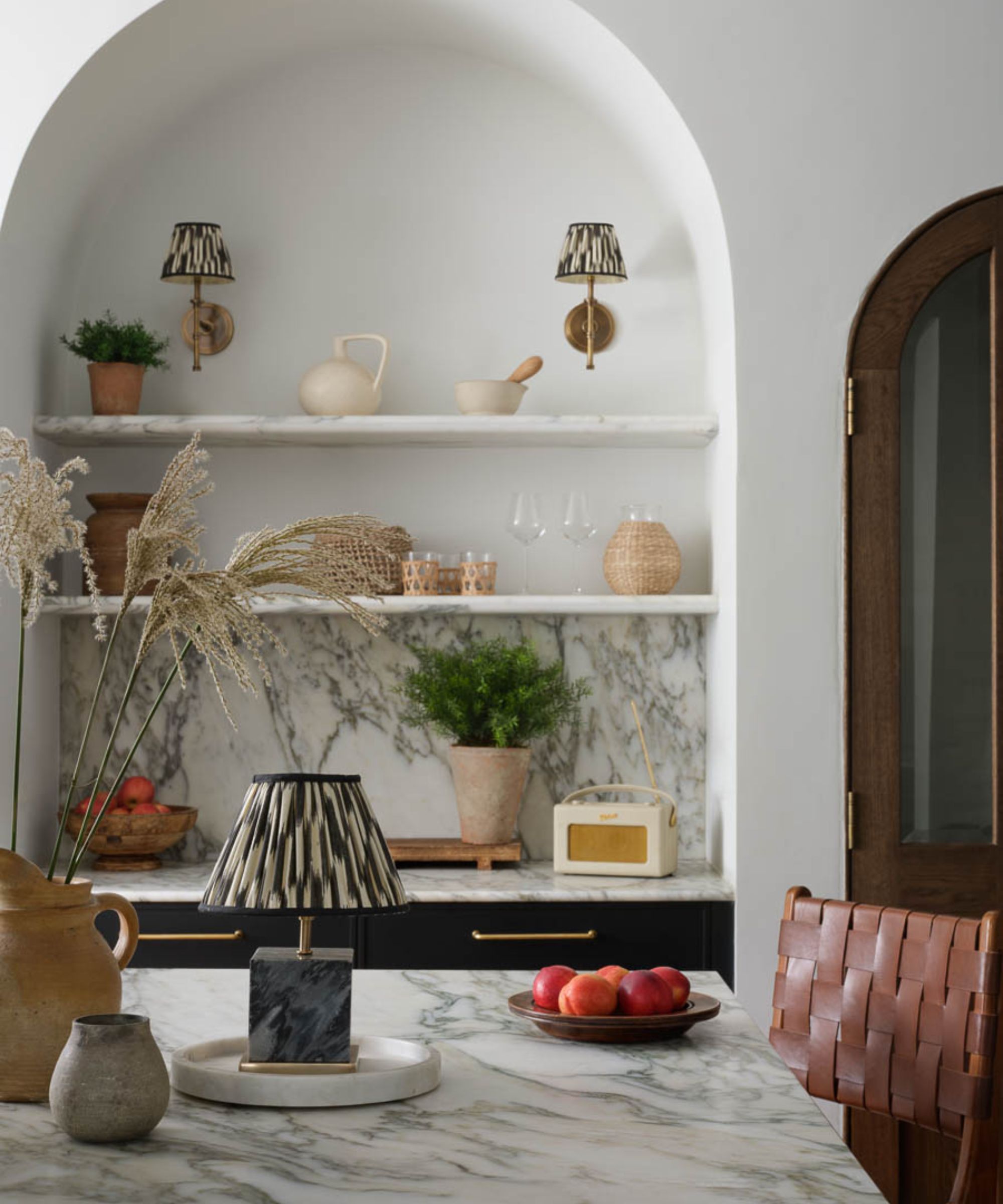
Kitchen lighting is really important if you want to create a more sociable space. Ambiance is key, and a room filled with bright, stark lighting is off-putting. So, introducing different light sources for the different uses of the space is key, especially for the more sociable zones.
'Layered lighting is especially important, task lighting over countertops, softer ambient lighting for dining or chatting, and ideally some flexibility between the two,' says Richard.
Try to include a mixture of ceiling lights, wall sconces, and countertop lamps for the perfect layered lighting scheme. Pendant lights above the island fuse style and function, while lamps create a sociable ambiance around a seating area.
8. Think about hardware

When you're designing a kitchen to be more sociable, you probably don't think of your kitchen cabinet hardware as a big part. But it's a small detail that has a big impact on how the kitchen is used, and the right designs will help to create the feel and atmosphere you desire.
'In sociable kitchens, handles get used constantly, by guests grabbing glasses, by kids rummaging for snacks, by everyone in between. So the finish, scale, and feel of the hardware matter,' says Gareth Hull, design lead at Hendel & Hendel.
'We always recommend something that sits comfortably in the hand and pairs well with the materials in the room. A finish like burnished brass brings warmth and softness, while aged bronze adds subtle depth and texture, both work especially well in kitchens designed for hosting and everyday use alike,' he explains.
It's not just the tactility that comes into play, either. In any style of kitchen, hardware plays a big part aesthetically – a sociable kitchen is all about softness and warmth, and the finish you choose caters to this.
'Styling a sociable kitchen isn’t about decoration for its own sake, it’s about creating a space that’s functional and inviting in equal measure. Hardware plays a quiet but important role in that, helping to tie cabinetry, surfaces, and lighting together into something that feels aesthetically pleasing and easy to live with.'
9. Decorate with personal pieces
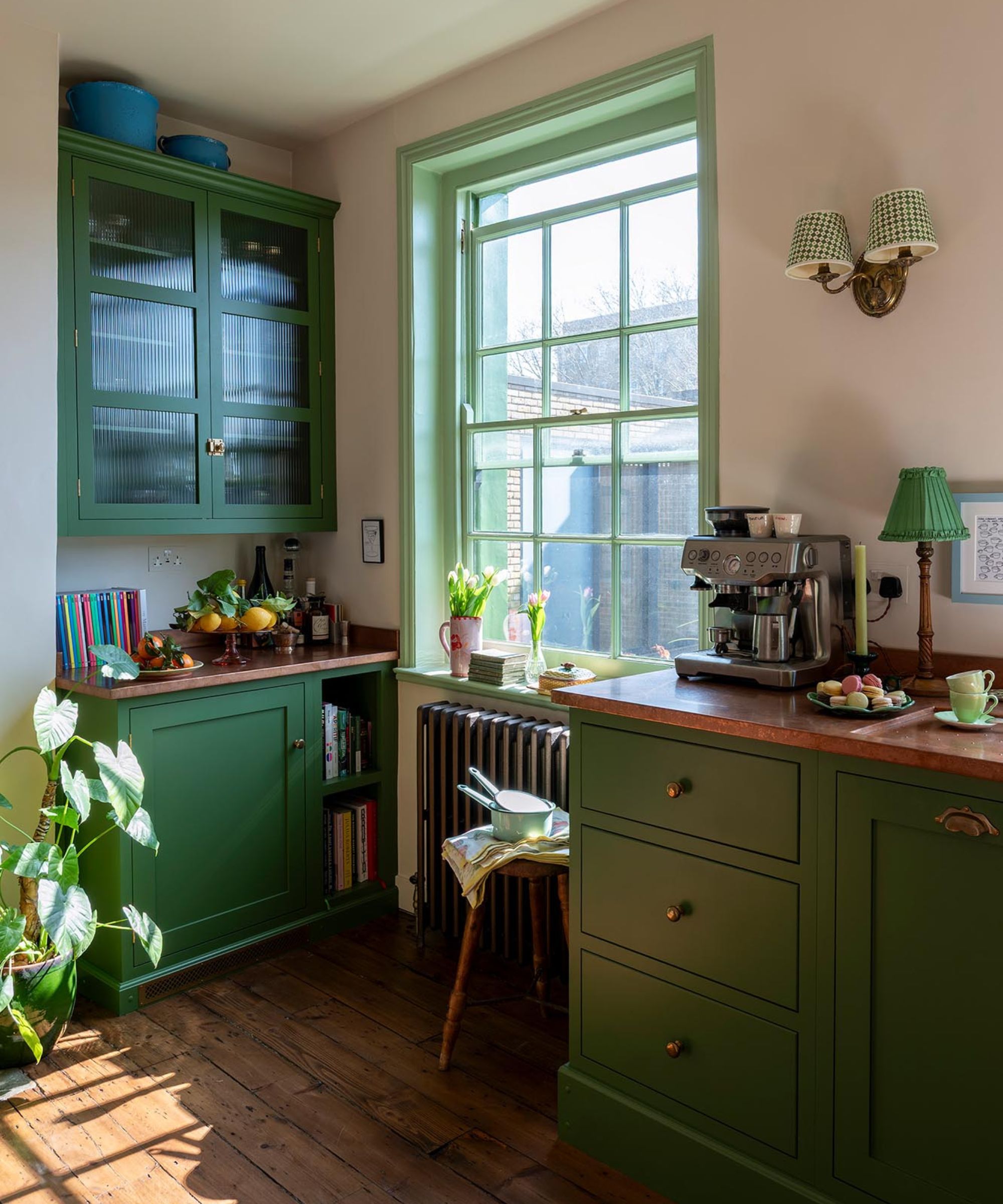
Decorative pieces play a huge role in a sociable kitchen. It adds a lived-in, personal feel that instantly makes people feel more at home. And with the right pieces, it can feel beautifully styled in a truly authentic way.
'Styling should soften the kitchen’s functional edges and help it blend seamlessly with the rest of the home. Keep the area above kitchen countertops open where possible, and avoid crowding walls with upper cabinetry,' says Fred.
'Incorporate art, ceramics, or personal objects on shelves to make the space feel more curated and lived-in. A few well-placed plants or a vase of fresh flowers will add warmth and life, while natural materials – wood, linen, stone – enhance the inviting atmosphere. The goal is to make the kitchen a place people want to linger, not just pass through.'
10. Soften the space through textures and textiles
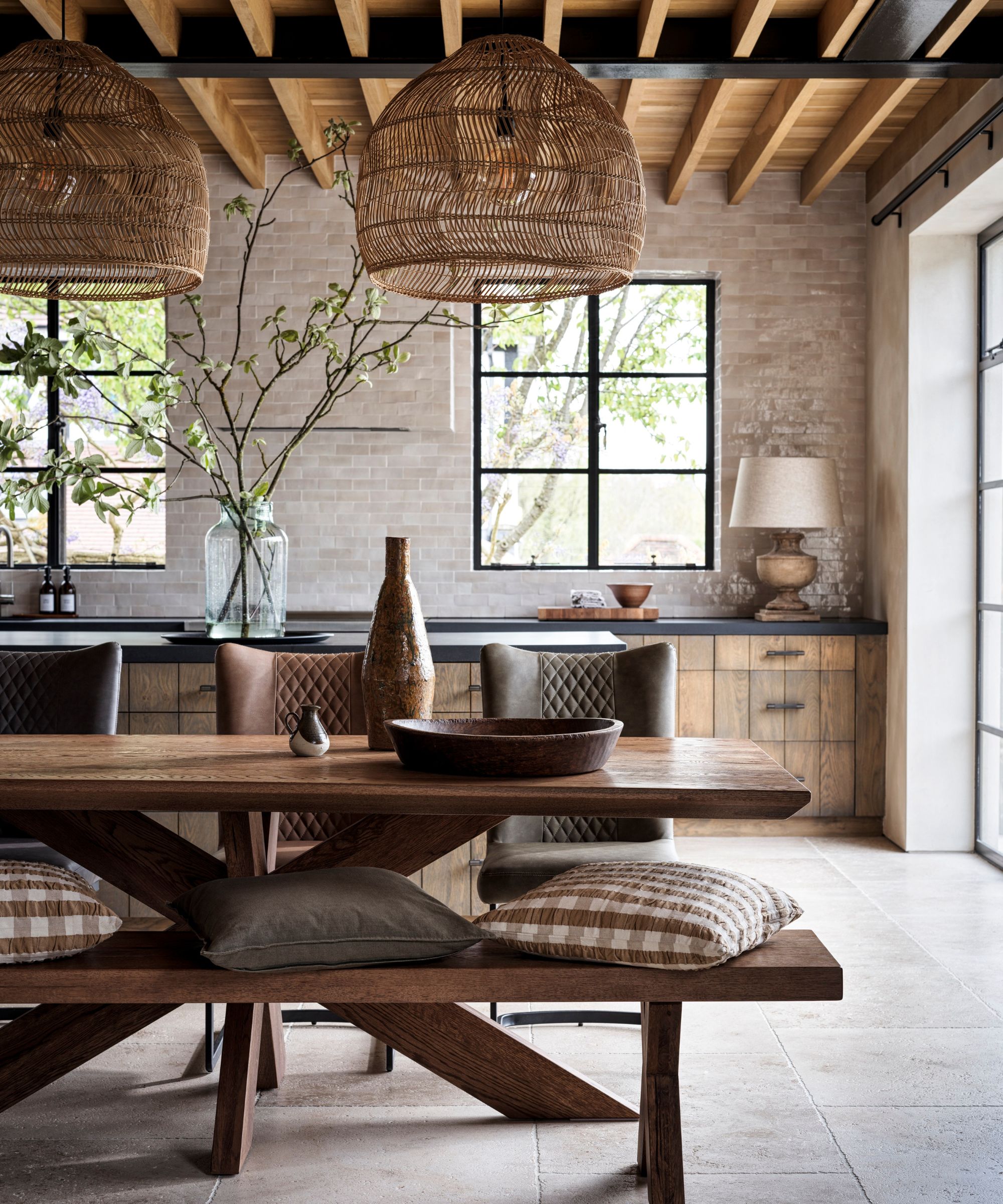
If you want people to spend time, relax, and get comfortable in your kitchen, it needs to feel cozy and feature lots of soft textures. There are plenty of areas around the kitchen that you can focus on.
'Softer furnishings can enhance a sociable kitchen to create a comforting and warming atmosphere. You can also introduce tactile elements like woven stools, open shelving with ceramics, and linen upholstery,' says Debra Hutt, kitchen expert at Wren Kitchens.
'These natural textures soften the space and add an inviting, curated touch. Equally, soft, earthy tones, like sage, clay, or off-white, complement natural materials and help the space feel calm, cohesive, and effortlessly sociable.'
Shop sociable kitchen essentials
Creating a more sociable kitchen doesn't have to be a major project – it really can be as simple as making your existing seating more comfortable and introducing new lighting.
It's all about creating an inviting and lived-in space that encourages you and your guests to stick around and spend time in. While a kitchen island is often at the center of a sociable design, it's not an essential – a small dining table or breakfast bar can have the same impact.

I’ve worked in the interiors magazine industry for the past five years and joined Homes & Gardens at the beginning of 2024 as the Kitchens & Bathrooms editor. While I love every part of interior design, kitchens and bathrooms are some of the most exciting to design, conceptualize, and write about. There are so many trends, materials, colors, and playful decor elements to explore and experiment with.
You must confirm your public display name before commenting
Please logout and then login again, you will then be prompted to enter your display name.


